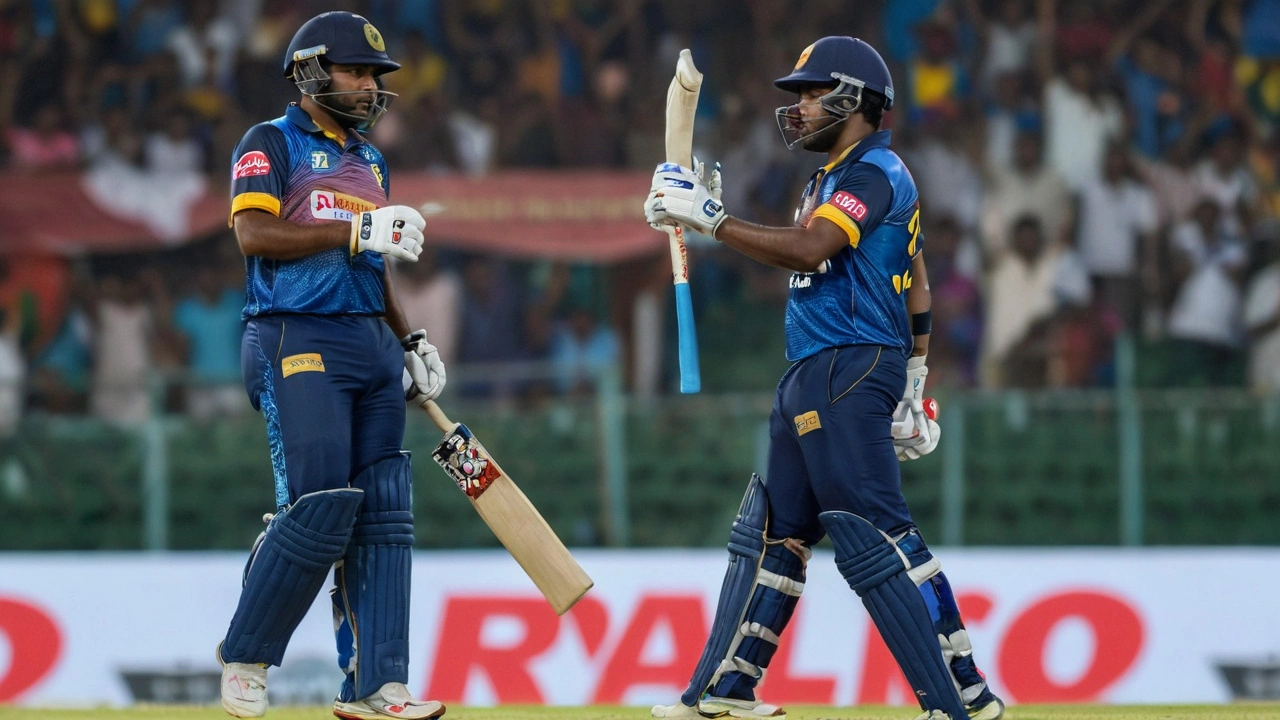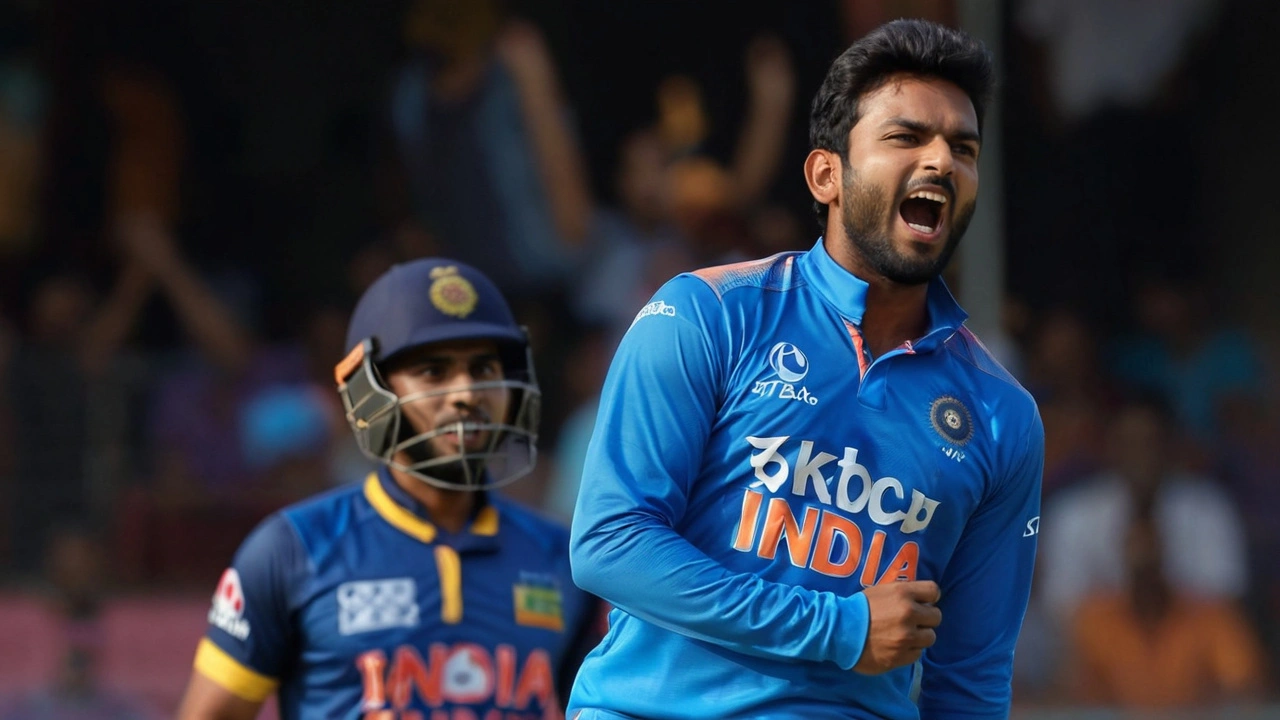India vs Sri Lanka: Preview of a Crucial 3rd ODI
Cricket fans around the world turned their attention to the R Premadasa Stadium in Colombo, where Sri Lanka and India faced off in a highly anticipated third One Day International (ODI) match. With the series tied, the stakes were higher for India, who were striving to avoid their first series defeat to Sri Lanka in 27 years. The significance of the game was immense, particularly for head coach Gautam Gambhir, who was leading the team in his first ODI assignment. An experienced player with formidable stature, Gambhir found his coaching capabilities put to the test under intense scrutiny.
Sri Lanka, having won the toss, decided to bat first. An air of curiosity surrounded the decision, given the pivotal nature of the match. However, as the game progressed, it became evident that this was a carefully calculated move. The Lankan batsmen started on a positive note, working to build a solid foundation. The Indian bowlers, on the other hand, tried to make early inroads but faced sturdy resistance.
Indian Bowlers Versus Sri Lankan Batsmen: A Strategic Battle
Sri Lanka's batting lineup, while not consistently formidable, has shown sparks of brilliance. The team managed to post a competitive total of 248 for 7, thanks to small contributions from almost every key batsman. Despite the challenging pitch conditions and the disciplined Indian bowling attack, the Sri Lankan batsmen displayed immense tenacity. The Indian bowler Riyan Parag, making his ODI debut, impressed many by picking up three significant wickets and ended up with figures of 3 for 54. This was a promising start for the young talent.
For India, the bowling department’s performance was commendable in parts. The experienced bowlers, like Bhuvneshwar Kumar and Kuldeep Yadav, managed to restrict the opposition with their tight lines and smart variations. However, India’s inability to completely tie down the Lankan batsmen in the final overs allowed Sri Lanka to reach a total that was competitive and defendable.
The Indian Chase: Early Stumbles
The Indian innings commenced with an air of anticipation. However, this quickly turned to concern as India lost their captain Rohit Sharma for just 35 runs, and Shubman Gill followed suit with only 6 runs to his name. The opening duo’s early departure heralded a stumble for the Indian innings. Virat Kohli, widely regarded as one of the best batsmen in the world, struggled once again. Kohli, managing to score only 20 runs, has had a particularly tough series, raising questions about his form and technique against the potent Sri Lankan spin attack.
Shreyas Iyer’s departure for 8 added further misery to India’s situation. By the 20th over, India found themselves at 109 for 8, a position from which victory seemed almost impossible. The spin duo of Jeffrey Vandersay and the rest of the Lankan spinners have truly been a thorn in India’s side throughout the series. Their sharp turn, bounce, and control over the ball have exposed the Indian batsmen’s vulnerabilities against quality spin.
The Middle-Order Collapse: A Recurring Problem
One of the major talking points of the series has been the capacity of the Indian middle order to handle pressure. While the openers showed some resilience, the middle order’s frequent collapses have cost India dearly. Players like Suryakumar Yadav and Hardik Pandya, both known for their explosive batting styles, failed to steady the ship or prolong their innings. This middle-order fragility against spin has raised concerns about the team’s preparation and approach in high-stakes matches.
The addition of young talents and fresh blood like Riyan Parag is a positive indicator for India’s future, but the immediate concern remains the lack of consistency and application in their batting efforts. The collapses signify a need to perhaps rethink strategies, whether it's in terms of improving technique against spin or reassessing individual roles within the batting lineup.
Saving Grace: The Lower Order Fight
Despite the bleak outlook, India’s lower-order players like Washington Sundar and Shivam Dube showcased commendable resilience. As Sundar and Dube fought valiantly to stave off defeat, they were also highlighting the grit and determination required to handle such pressure situations. While the target of 248 seemed a distant dream, their efforts provided a sliver of hope and displayed a fighting spirit.
This lower-order resistance is indeed a silver lining for the Indian team management, emphasizing the importance of depth in batting, especially in grueling ODI formats. The ability of the lower order to contribute significantly is crucial and could be a key area to focus on during practice sessions and strategic meetings.
Lessons for India: Addressing Spin Vulnerabilities
The series has exposed and amplified a critical weakness in the Indian batting lineup: their vulnerability against quality spin bowling. The Lankan spinners, especially Vandersay, have dominated the series, and their cunning variations have puzzled the Indian batsmen. Addressing this apparent weakness is imperative for the Indian team, especially with crucial tournaments such as the World Cup looming on the horizon.
Team strategists and coaches may need to consider specialized spin training sessions and perhaps even incorporating specific drills focused on countering spin to bolster their lineup. Developing a more circumspect and measured approach when handling spin attacks could be instrumental in ensuring resilience and consistency in future series.

Looking Forward: Hopes and Challenges
As this series draws to a close, there are ample areas and aspects for the Indian team to look back on and learn from. While the immediate goal of avoiding a series loss to Sri Lanka might be at risk, the broader picture encompasses a wealth of lessons and insights. For players like Virat Kohli, reclaiming form and finding rhythm against spin will be pivotal moving forward.
Gautam Gambhir’s role as coach also comes under spotlight, with his strategies and decisions being analyzed rigorously. Balancing experienced players with upcoming talents will be a delicate task. Maintaining team morale while instilling confidence and improving technical proficiencies stands as a significant challenge.
Indeed, the series has been a stark reminder of the unpredictable and exhilarating nature of cricket. It is a game where fortunes can swing dramatically with each delivery. For spectators and fans, the drama, the struggles, and the moments of brilliance all contribute to the unending allure of the sport. While the outcome of this match remains to be seen, the journey itself has been a riveting one, filled with lessons, strategies, and hope for a brighter path ahead for Indian cricket.





